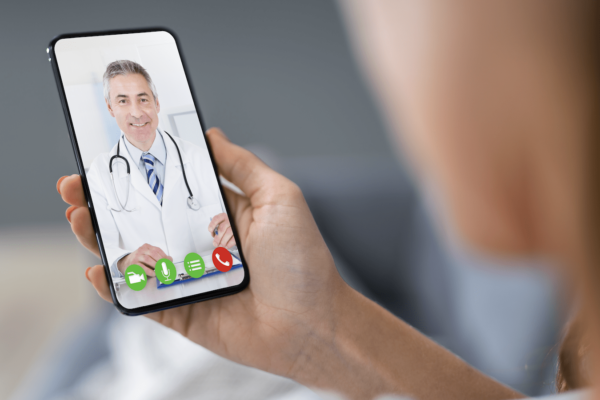What Is Telemedicine?

Telemedicine is a service which allows health care professionals to evaluate, diagnose and treat patients at a distance using telecommunications technology, such as the phone or the internet. The approach has been through a striking evolution in the last decade and it is becoming an increasingly important part of the American healthcare infrastructure.
It has been used to overcome distance barriers and to improve access to medical services that would often not be consistently available in distant rural communities. It is also used to save lives in critical care and emergency situations.
In the early days, telemedicine was used mostly to connect doctors working with a patient in one location to specialists somewhere else. This was of great benefit to rural or hard to reach populations where specialists aren’t readily available.
Throughout the next several decades, the equipment necessary to conduct remote visits remained expensive and complex, so the use of the approach, while growing, was limited.
The rise of the internet age brought with it profound changes for the practice of telemedicine. The increased availability and use of smart devices, capable of high-quality video transmission, opened up the possibility of delivering remote healthcare to patients in their homes, workplaces or assisted living facilities as an alternative to in-person visits for both primary and specialty care.
Telemedicine or Telehealth
The terms telemedicine and telehealth are often used interchangeably but there is a distinction between the two.
Where as Telemedicine involves the use of electronic communications and software to provide clinical services to patients without an in-person visit on the other hand, telehealth includes a broad range of technologies and services to provide patient care and improve the healthcare delivery system as a whole.
Telehealth is different because it refers to a broader scope of remote healthcare services than telemedicine.
While telemedicine refers specifically to remote clinical services, telehealth can refer to remote non-clinical services, such as provider training, administrative meetings, and continuing medical education, in addition to clinical services. According to the World Health Organization, telehealth includes, “Surveillance, health promotion and public health functions.”
Telemedicine technology is frequently used for follow-up visits, management of chronic conditions, medication management, specialist consultation and a host of other clinical services that can be provided remotely via secure video and audio connections.
The choice of which you need will depend on the situation you need the service for and will be decided by your medical health professional.
How Can Telemedicine Be Used?
There are numerous ways Telemedicine can be used, a few examples of how it is being used today include:
Follow-up visits
Using health software for routine follow-up visits is not only more efficient for providers and patients, but it also increases the likelihood of follow-up, reducing missed appointments and improving patient outcomes.
Remote chronic disease management
The increasing rate of chronic disease is a major challenge for our health system. It is a prime candidate for the use of telemedicine software because it makes it easier and less expensive for patients to maintain control over their health.
Remote post-hospitalization care
One telehealth program for patients with congestive heart failure reduced 30-day hospital readmissions by 73 percent and six-month readmissions by 50 percent.
Preventative care support
Weight loss and smoking cessation are the keys to reducing heart disease and a host of other conditions. Telemedicine can be a valuable tool in connecting providers with patients to make sure they get the support they need to be successful.
School based telehealth
When children become ill at school, they might visit a school nurse or be picked up by their parents and taken to an urgent care center. Some innovative districts have teamed up with doctors to conduct remote visits from the school. The provider can assess the urgency of the case and provide instructions or reassurance to parents.
Assisted living center support
Telemedicine software has already proven to be useful in keeping residence of assisted living facilities out of the hospital. Problems often occur at night or on weekends, making hospitalization the only option even for less urgent problems. With telemedicine, on-call doctors can conduct a remote visit to determine if hospitalization is necessary.
What are the Benefits of Telemedicine?
Both patients and providers can enjoy a wide range of benefits from using telemedicine.
For patients there will be less time away from work which means not losing out on money if a visit to the doctor is a regular occurrence for some reason. A second way that it will save the patient money is there is no travel costs, the service can be utilized in the comfort of their own home.
Thanks to telemedicine being available from your home you have an increased level of privacy.
Providers will be able to provide a better level of care for their projects thanks to: better patient follow through, improved health outcomes, fewer missed appointments and less cancellations.
Conclusion
Telemedicine is an evolving utility that’s being used in the health care profession. As smart devices and online capabilities improve, so too will the use of telemedicine.
The increased use of virtual reality or VR should bring with it a more personal level of telemedicine without any of the potential problems that come with actually visiting a doctors office.


